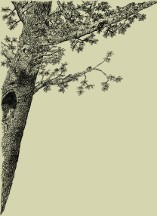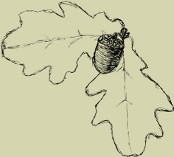42 41 40 39 38 37 36 35 34 33 32 31 30 29 28 27 26 25 24 23 22 21 20 19 18 17 16 15 14 13 12 11 10 9 8 7 6 5 4 3 2 1
Issue 42 (2011)
This work deals with decay resistance and selected physical and mechanical properties of wooden composites (WCs) prepared from 3.6 mm thick three-layer beech plywood and 0.6 mm thick decorative surface veneers of selected exotic (aningré, bubinga, iroko, khaya, padouk, sapelli, wengé) and domestic (beech, European oak, sweet chestnut, walnut) wood species. Joining of veneers in the plywood and then also in the WCs was carried out by pressing processes using the PF glue Fenokol 43. The aim of the experiment was to determine the influence of surface veneers of different natural durability on rotting of the WCs, and on resistance of the WCs to water and mechanical loadings, as well. Decay resistance of individual veneers and WCs was tested by modified EN 113 against the brown-rot fungi Serpula lacrymans or Coniophora puteana, and the white-rot fungi Phanerochaete chrysosporium or Trametes versicolor. Weight losses of individual types of veneers and WCs caused by wood-destroying fungi were compared with weight losses of beech-veneer and beech-WC, respectively. The lowest weight losses at rotting processes showed the padouk-WC, i.e. WC prepared from the beech plywood and two the most durable padouk surface veneers. Density, water soaking, water swelling, tensile strength perpendicularly to the plane (σ⟂), and bending characteristics (MOR, MOE) of all WCs were determined in accordance with European standards. These physical and mechanical properties of the WCs were only partly influenced by the type of surface veneers. Selected types of the WCs, e.g. padouk-WC, could also be convenient for exterior expositions out of ground contact.
Key words: wooden composites, durability, rotting fungi, water resistance, strength
Changes of physical and chemical properties, mass loss and susceptibility of oak wood to decay caused by Basidiomycetes fungi were assessed after wood samples had been taken out of the sea within the framework of MACHU project. Test samples of oak wood of the dimensions of 250 × 10 × 10 mm were placed in coastal waters of the Baltic Sea at the area of medieval seaport in Puck and in waters of the Gdańsk Bay at the same longitude as Orłowo (near the wreck of Swedish warship Solen). The samples taken out of the sea were examined visually and described. Changes in mass of the samples, their bending strength and modulus of elasticity, compression strength along the grain, ability to decay caused by Trametes versicolor fungus, content of mineral substances and substances soluble in water, ethanol-benzene mixture and in 1-percent aqueous solution of NaOH, content of cellulose, lignin and pentosanes as well as pH of the wood were investigated. The properties of samples taken out of the sea after 6 months of immersion were compared with the properties of control twin samples of oak wood which had not been immersed. The results obtained so far indicate that noticeable, measurable changes in oak wood immersed in sea occur already in half a year since immersion, so observation of them may be useful for protection and monitoring of underwater archaeological objects.
Key words: oak wood, Baltic Sea, strength, fungi, decay, chemical composition of wood, archaeological wood
The study investigated the effect of the modification of phenolic resin with sodium oxalate and ethylene glycol on properties of particleboards. It results from the conducted tests that the simultaneous introduction of ethylene glycol and sodium oxalate to PF resin, irrespective of the amounts of modifiers, results in a slight increase in bending strength and modulus of elasticity of particleboards. However, a strong decrease was observed in internal bond after the boiling test. Observed changes in properties of particleboards, occurring under the influence of the applied modification, undermine the applicability of such a modification.
Key words: PF resin, particleboard, polyols
The paper presents the results of the study concerning elastic properties of beech veneers assembled in plywood panels. There has been derived a complete set of elastic constants for veneers considered as orthotropic bodies. Young's moduli in the grain direction and in the direction perpendicular to the grain were determined by bending plywood strips with their longitudinal axis parallel and perpendicular to the grain of the face plies. The other elastic moduli of the veneers were calculated through the Young's modulus in the grain direction, with using the regression functions derived for hardwoods by Bodig and Goodman (1973). The effect of glue lines in plywood on the veneer elastic properties was evaluated.
Key words: beech wood, elastic constants, plywood, orthotropy, veneer















 Download PDF
Download PDF